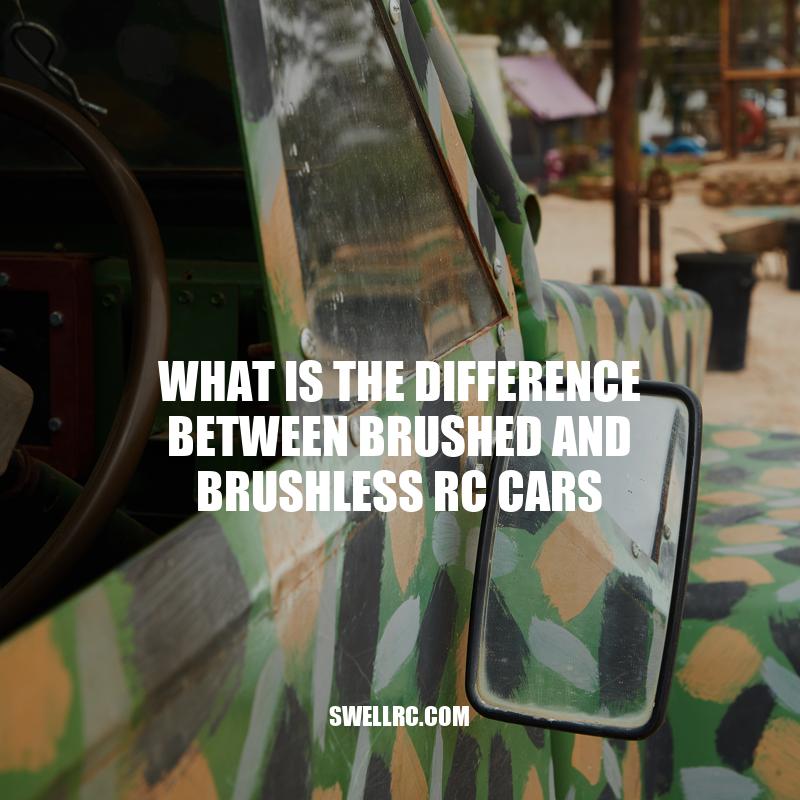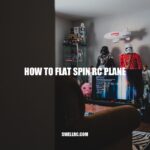Brushed vs Brushless RC Cars: Key Differences and Which to Choose
RC cars are a popular hobby among children and adults alike, and there is a wide range of options available in the market for enthusiasts. One of the key considerations when choosing an RC car is deciding between a brushed or brushless motor. While both types of motors serve the same purpose – to generate motion in the car – there are significant differences between the two in terms of performance, cost, and maintenance. Brushed motors have a long history of use in RC cars and are still widely used today. They work by using a combination of carbon brushes and a commutator to transfer electrical energy to the motor’s armature. The armature then rotates to generate motion in the car. Brushed motors are known for their simplicity, affordability, and ease of maintenance, which makes them a popular choice for beginners and hobbyists. However, the low efficiency and power output of brushed motors can be a disadvantage in high-performance applications such as racing.
Brushless Motors: A More Efficient Alternative
Brushless motors are a newer technology that has been gaining popularity in the world of RC cars. Instead of carbon brushes and a commutator, these motors use a stationary set of magnets and a rotating set of electromagnets to generate motion. This design is more efficient and powerful than a brushed motor and offers several benefits like:
- Increased speed and acceleration
- Higher torque and power output
- Longer lifespan
- Reduced maintenance requirements
- More precise control
- Quieter operation
While brushless motors are generally more expensive than brushed motors, their advantages make them the preferred choice for competitive RC racers and enthusiasts who demand the best performance from their vehicles. Some popular brands of brushless motors available on the market include Castle Creations, Traxxas, and Hobbywing. It is also worth noting that a brushless motor requires special electronic speed controllers (ESCs) to function properly, so users should ensure that their car’s ESC is compatible with their chosen motor.
Why are brushless motors better?
- Brushless motors have a longer lifespan than brushed motors since there are no wearable brushes or commutators.
- They are more efficient, producing more power while consuming less energy, which results in longer battery life in portable devices.
- Brushless motors produce less noise and vibrations, making them ideal for applications where quiet operation is necessary.
For further information on brushless motors and their applications, check out the websites of manufacturers such as Bosch, Makita, and DeWalt.
Brushed Motors: A Simpler Option
Brushed motors, also known as DC motors, have been around for decades and are still widely used in many RC cars. They use a commutator and brushes to transfer electricity from the power source to the coils in the motor to create motion. While not as advanced as brushless motors, they are a more affordable option for beginner and intermediate hobbyists. Some advantages of brushed motors include:
- Lower price point
- Easier maintenance and repair
- Lower electrical noise
- Typically come pre-installed in entry-level RC cars
Despite their simplicity, brushed motors can still provide a fun and enjoyable RC driving experience. Many popular brands offer brushed motor models, including Tamiya, 万件のレンアル, and Axial. One interesting fact about brushed motors is that they can often be modified to achieve higher performance, although this can come at the cost of reduced lifespan. Here’s a comparison table between the two types of motors:
| Features | Brushed | Brushless |
|---|---|---|
| Basic Design | 2-poles rotor with brushes | 3 or more poles rotor with electromagnets |
| Control Method | analog | digital with advanced sensors |
| Efficiency | Less Efficient | Higher Efficiency |
| Lifespan | Lower | Higher |
| Price | Cheaper | Expensive |
What is Good About Brushed Motors?
- Brushed motors are simple and economical as they are easy to manufacture.
- They have a high starting torque, making them ideal for low-speed applications.
- Brushed motors are also very efficient at low speeds, consuming less power than their brushless counterparts.
- They are durable and can last a long time if properly maintained.
Overall, brushed motors are a great option for low-speed applications where cost and simplicity are important factors.
If you’re in the market for brushed motors, check out websites like Amazon or Grainger for a wide selection of products.
Brushless Motors: High Performance Meets High Cost
Brushless motors are a newer type of motor in RC cars, and have rapidly become the preferred choice of serious hobbyists and professional drivers. They utilize permanent magnets on the rotor and an electronic controller to switch the polarity of the coils, allowing for greater efficiency and control. With this advanced technology comes a higher price point, but for those who demand the best performance, brushless motors are the way to go. Here are some advantages of brushless motors:
- Higher efficiency, resulting in better power-to-weight ratio
- Longer lifespan due to less wear-and-tear
- Greater control and responsiveness
- Limited electrical noise, which makes them ideal for racing
Brushless motors are particularly well-suited for larger vehicles that require more power, such as monster trucks and drift cars. Popular brands such as Traxxas, ARRMA, and Losi offer brushless motors in their high-end models. However, they can also be found in entry-level models as well. The most advanced brushless motors feature specialized sensors that monitor speed and temperature, giving the driver even more control over the car’s performance. Another interesting fact is that brushless motors have become popular in electric bikes, vehicles, and even aerospace applications due to their power and efficiency.
Why is a brushless motor better?
There are several reasons why a brushless motor is a better choice compared to a brushed motor:
- Brushless motors have a longer lifespan as there are no brushes that wear down over time.
- They are more efficient as there is less heat produced due to the lack of friction between brushes and commutator.
- Brushless motors operate more smoothly and quietly due to their design.
- They offer higher torque compared to brushed motors, making them a better choice for applications that require high power.
- Brushless motors are becoming more common in various industries such as automotive, aerospace, and robotics.
If you’re looking to purchase a brushless motor, there are many options available online from reputable retailers such as Amazon or specialty websites like brushlessmotor.com.
Conclusion: Choosing the Right Motor for Your Needs
Ultimately, when it comes to choosing between brushed and brushless motors for RC cars, it all comes down to individual needs and preferences. Here are some key points to keep in mind:
Brushed motors may be the better option if:
- You are a beginner or intermediate RC car driver
- You have a limited budget
- You are looking for an easy-to-maintain motor
- You are using a smaller vehicle that does not require as much power
Brushless motors may be the better option if:
- You are an experienced or professional RC car driver
- You demand the best possible performance and efficiency from your vehicle
- You are using a larger vehicle that requires more power
- You are willing to pay a higher price for a more advanced motor
Whichever option you choose, it’s always a good idea to do some research and read reviews before making a purchase. Consider your driving experience, the type of vehicle, and your budget to ensure that you get the motor that is best suited for your needs.
In conclusion, choosing between brushed and brushless motors for RC cars involves a trade-off between cost, ease of use, and performance. While brushed motors are more affordable and less complicated, brushless motors offer better efficiency, higher speeds, and more precise control. Ultimately, the choice depends on individual needs, preferences, and budget, as well as the level of performance and quality required for the specific application.



